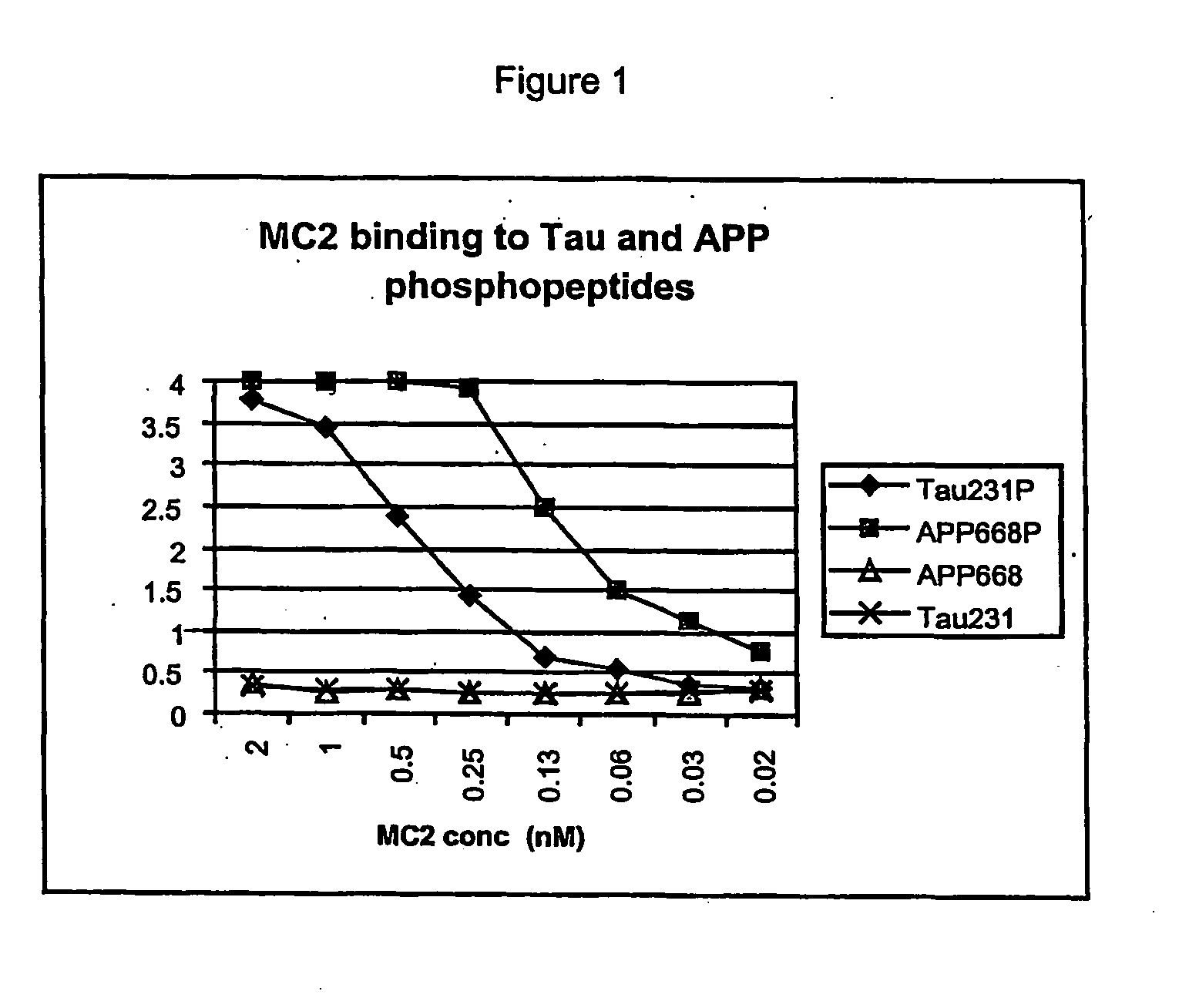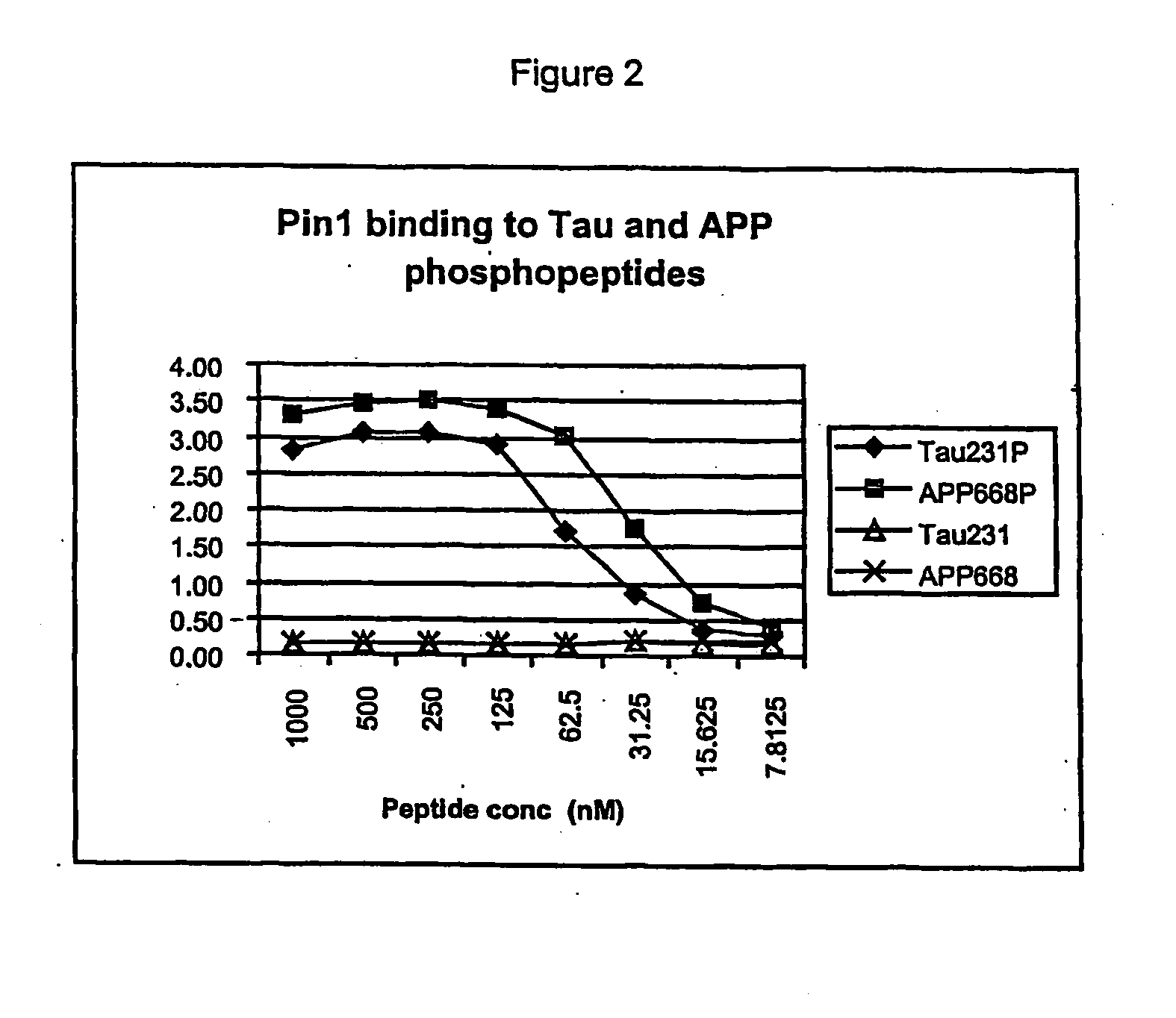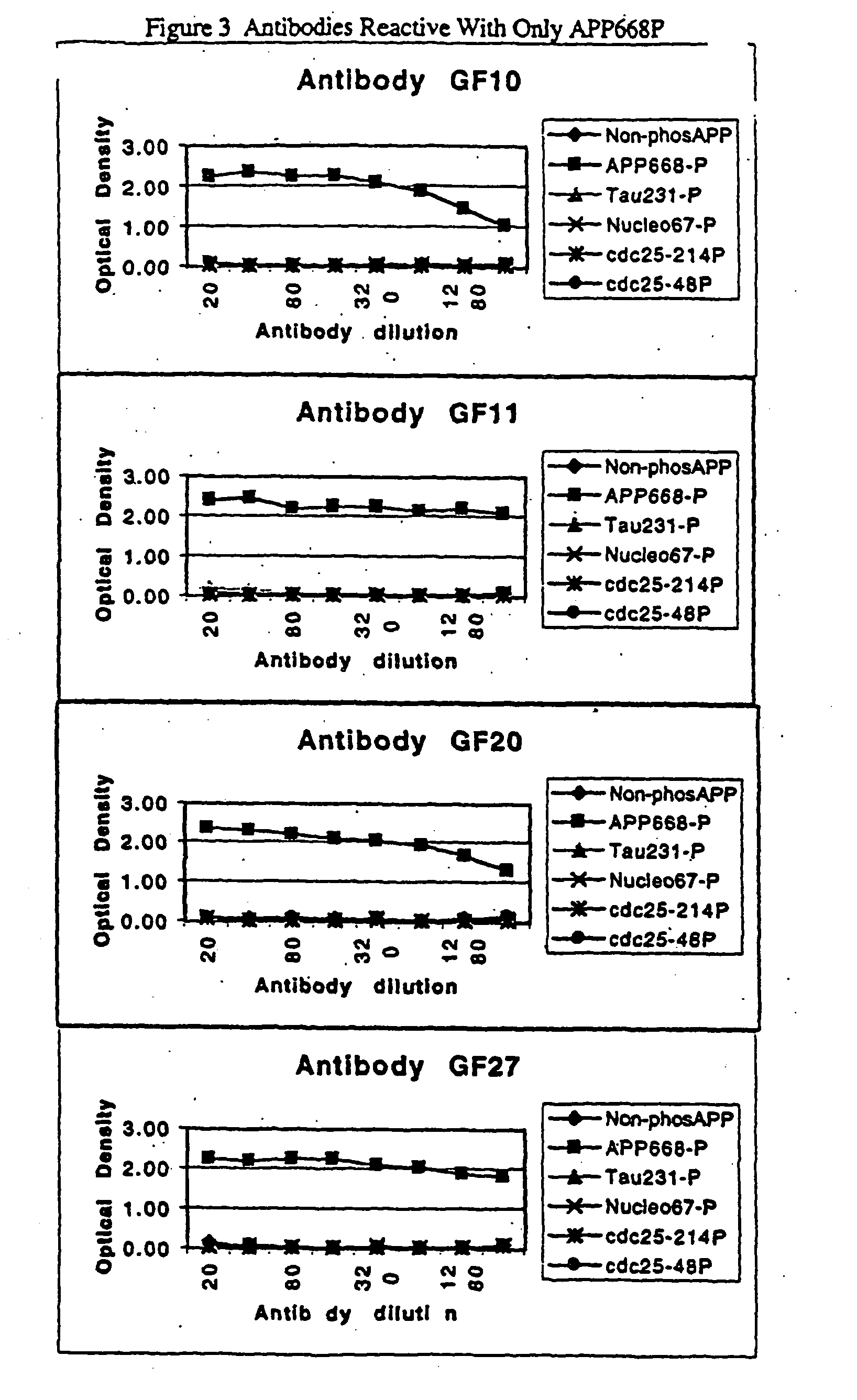Reagents and methods for identification of binding agents
a technology of binding agents and reagents, applied in the field of reagents and methods for identification of binding agents, can solve the problems of inability to produce and deposition of this peptide, lack of information, apoptosis or death through other less well-characterized mechanisms, etc., and achieve the effect of reducing binding
- Summary
- Abstract
- Description
- Claims
- Application Information
AI Technical Summary
Benefits of technology
Problems solved by technology
Method used
Image
Examples
example 1
Antibodies that Bind Phosphothreonine 231 of Tau (Tau231P) and / or Phosphothreonine 668 of APP (APP668P)
[0076] A. Materials and Methods
[0077] To identify compounds which bind to tau peptides phosphorylated on threonine 231, a 96 well or 386 well ELISA plate is coated with Neuravidin in 20 mM K.sub.2HPO.sub.4 / 10 mM KH.sub.2PO.sub.4, 1 mM EDTA, 0.8% NaCl, 0.01% NAN.sub.3, pH 7.2, using a protein concentration of 5 micrograms per ml. All volumes in ELISA plates are 50 microliters, except for storage, where 200 microliters is added. After coating, plates are incubated with 10 mM tris base, 150 mM NaCl, pH 7.4 CIBS) containing 2% bovine serum albumin (BSA) and stored at 4oC. Plates prepared this way are stable for several weeks.
[0078] A peptide derived from the protein tau was utilized, as shown below:
[0079] Biotin-KKVAVR(phospho)TPPKSPSS (SEQ D NO. 1)
[0080] The peptide was diluted to a concentration of 0.5 micromolar in TBS containing 2% BSA, and 50 microliters per well were added follow...
example 2
Assay to Identify Compounds that Bind Tau231P and / or APP668P
[0094] Due to the apparent similarity between the tau and APP phosphoepitopes, studies were conducted to determine whether Pin1 will bind to both proteins after phosphorylation by cdc2. Phosphopeptides derived from both the tau sequence near threonine 231 and around APP threonine 668 both bind Pin1 with high affinity. This fact has led to the development of assays for identifying binding agents that interfere with the interaction of Pin 1 with tau and APP.
[0095] Assays have been established in which the tau and APP phosphopeptides are biotinylated and immobilized on Neutravidin-coated 96 well ELISA plates. The GF31 antibody recognizes both the tau231P and APP668P phosphopeptides, with a lower affinity for tau231P (FIG. 5A). This lower affinity for the tau phosphopeptide has been exploited by developing an extremely sensitive assay in which low concentrations of this biotinylated peptide (30 nM) are incubated with neutravidi...
PUM
| Property | Measurement | Unit |
|---|---|---|
| Interaction | aaaaa | aaaaa |
Abstract
Description
Claims
Application Information
 Login to View More
Login to View More - R&D
- Intellectual Property
- Life Sciences
- Materials
- Tech Scout
- Unparalleled Data Quality
- Higher Quality Content
- 60% Fewer Hallucinations
Browse by: Latest US Patents, China's latest patents, Technical Efficacy Thesaurus, Application Domain, Technology Topic, Popular Technical Reports.
© 2025 PatSnap. All rights reserved.Legal|Privacy policy|Modern Slavery Act Transparency Statement|Sitemap|About US| Contact US: help@patsnap.com



